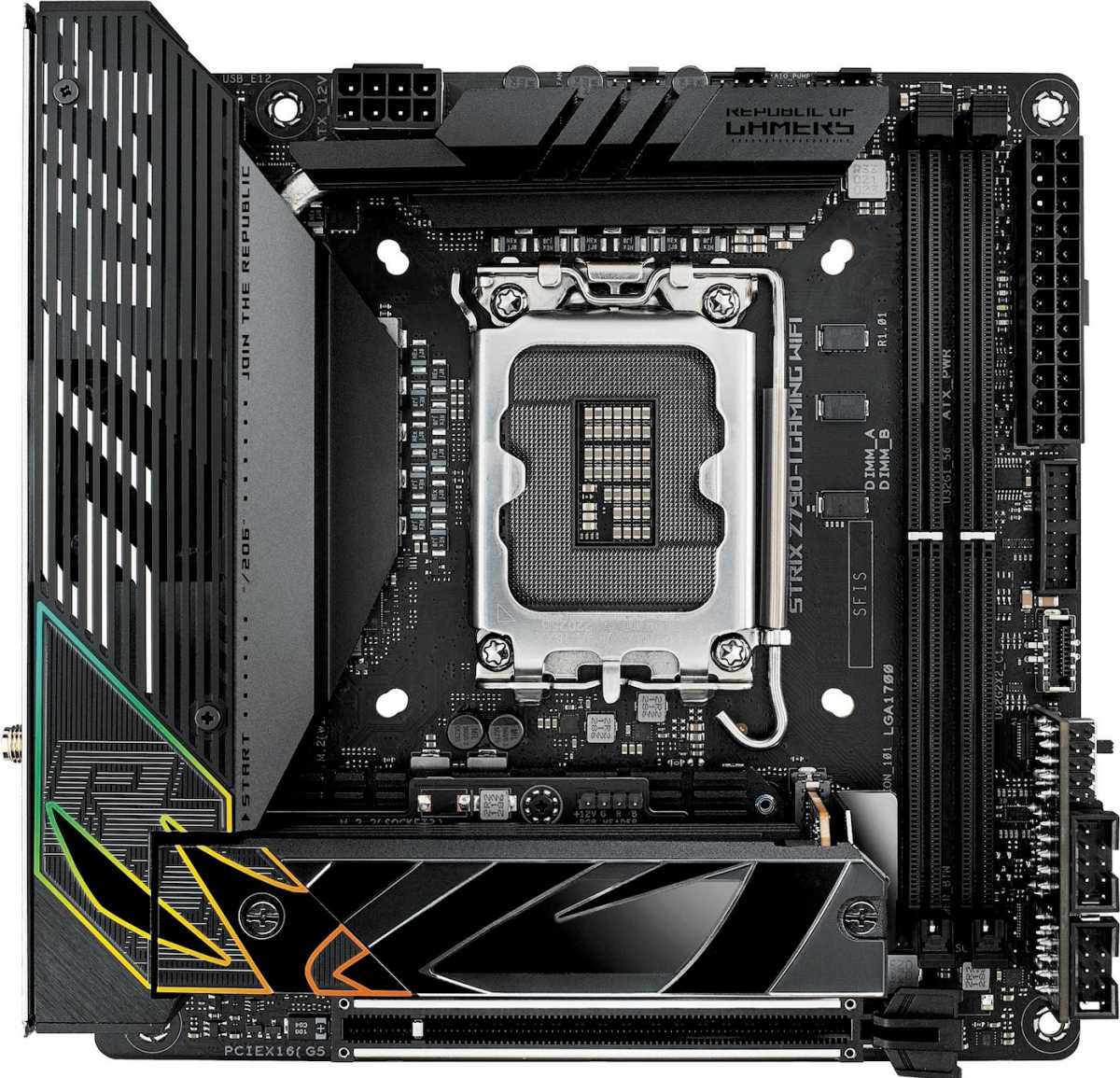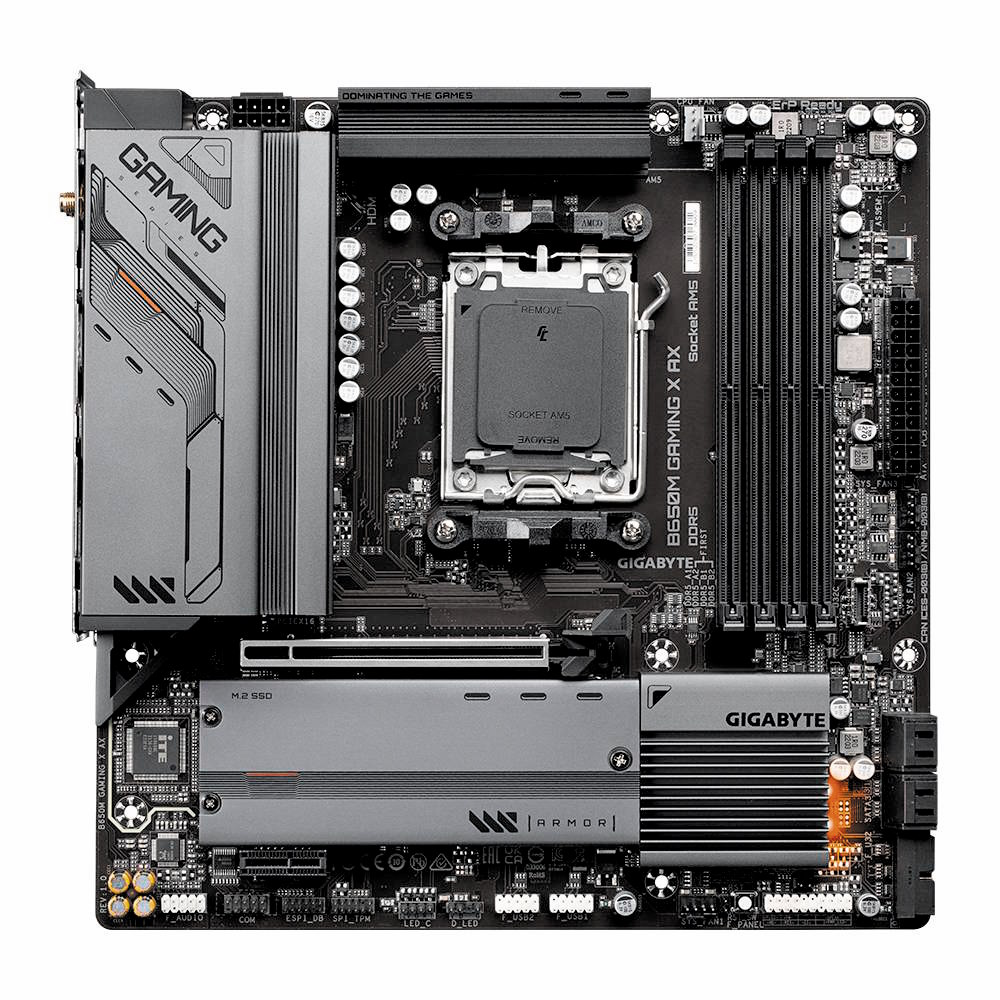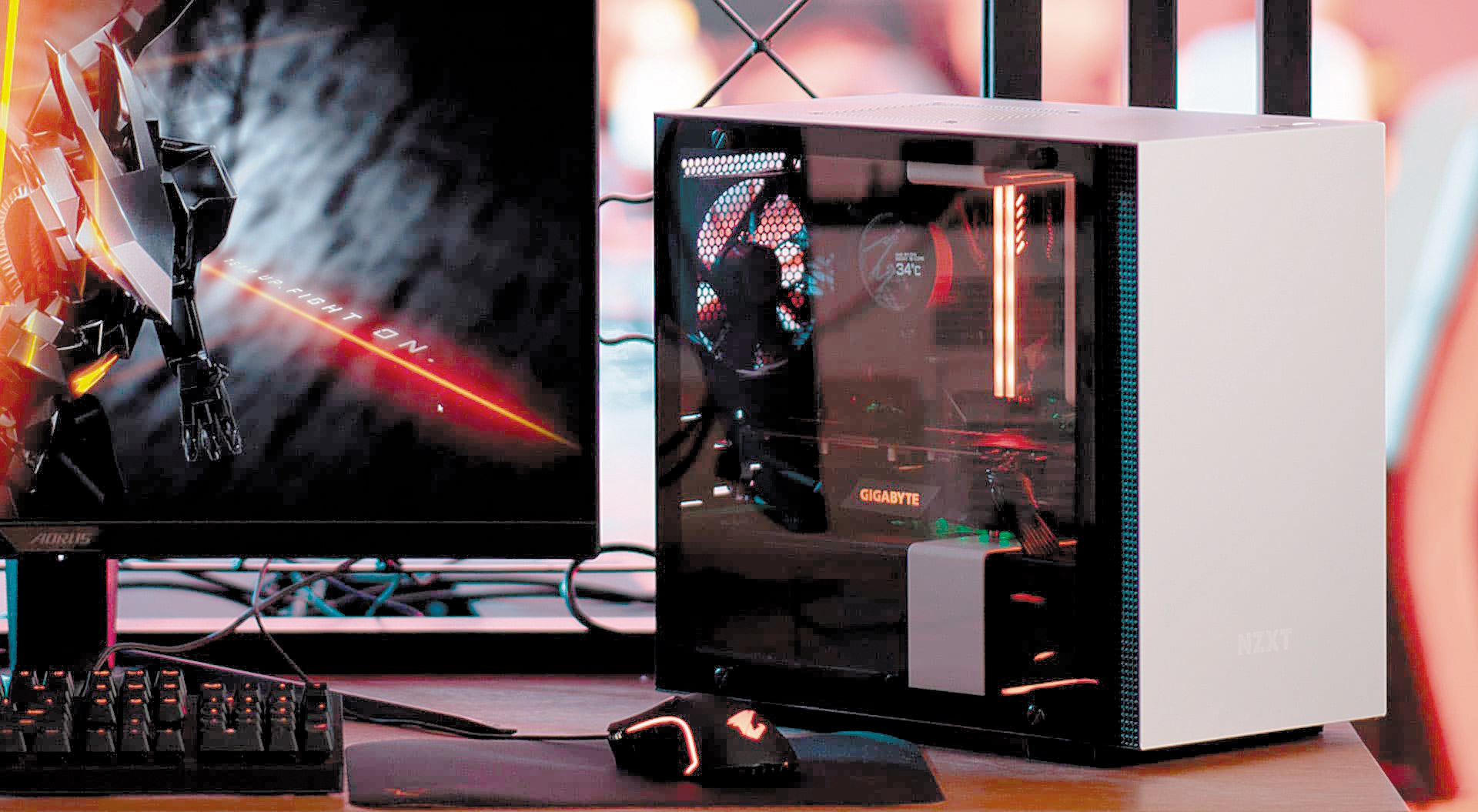Micro-ATX vs. Mini-ITX: Pros and cons for tiny motherboards
Mini-ITX motherboards, which measure approximately 6.7 x 6.7 inches, are significantly smaller than Micro-ATX models measuring 9.6 x 9.6 inches. This smaller size makes Mini-ITX ideal for tiny computers that are even suitable for travelling, but offer fewer features and limited expansion options compared to Micro-ATX. Mini-ITX usually only has a single PCIe x16 slot, a maximum of two M.2 slots as well as SATA ports, and limited USB ports as well as RAM slots.
Micro-ATX motherboards, on the other hand, are often cheaper and offer better compatibility with other PC components. This makes them a suitable choice for budget configurations. They are a scaled-down version of ATX motherboards that retain key features. Very reduced versions have only two RAM slots.

Mini-ITX is a very compact motherboard format that leaves little room for additional components, but allows for very small computers.

Mini-ITX is a very compact motherboard format that leaves little room for additional components, but allows for very small computers.
Asus

Mini-ITX is a very compact motherboard format that leaves little room for additional components, but allows for very small computers.
Asus
Asus
In terms of case size, Mini-ITX cases typically range from 5 to 12 liters, while small Micro-ATX cases are around 12 to 30 liters. The choice of case directly influences the expandability and cooling options. Mini-ITX models limit the size of cooling solutions and the number of fans, while Micro-ATX chassis leave more room for better cooling and larger components.
Inexpensive motherboards versus expensive models: You should pay attention to this
Tightly packed, powerful components in a small space often lead to a challenge with Mini-ITX, as it’s not always possible to add more fans for cooling. Micro-ATX cases, on the other hand, offer more space for fans and larger radiators.

Micro-ATX motherboards offer slightly more space and therefore more room for additional components. They are usually easier to cool as there is more space for fans.

Micro-ATX motherboards offer slightly more space and therefore more room for additional components. They are usually easier to cool as there is more space for fans.
Megabyte

Micro-ATX motherboards offer slightly more space and therefore more room for additional components. They are usually easier to cool as there is more space for fans.
Megabyte
Megabyte
In terms of price, Mini-ITX is often more expensive than Micro-ATX. Mini-ITX does not benefit from the same economies of scale as Micro-ATX and ATX, resulting in higher costs for fewer features. Micro-ATX is therefore often cheaper than standard ATX motherboards and offers a good balance between size and features.
Further reading: Is your motherboard defective? Here’s how to identify warning signs
When it comes to portability, Mini-ITX boards allow for smaller PC builds. Only gaming laptops are even easier to transport. With Micro-ATX cases, you don’t have to make any significant compromises in terms of space and portability.

Compact mini PCs require small motherboards — for example, using the Mini-ITX standard. If you opt for this, you often have to accept some compromises when assembling.

Compact mini PCs require small motherboards — for example, using the Mini-ITX standard. If you opt for this, you often have to accept some compromises when assembling.
IDG

Compact mini PCs require small motherboards — for example, using the Mini-ITX standard. If you opt for this, you often have to accept some compromises when assembling.
IDG
IDG
The narrow form factor also increases the complexity of assembling Mini-ITX. The particular challenges include, for example, cable management or fitting components. Because there is more space available, Micro-ATX has more room for the hardware to be installed, which makes assembly easier.
Further reading: 6 basic mistakes to avoid when installing a motherboard
Ultimately, the choice of housing should be made before building a PC, with Mini-ITX and Micro-ATX being universal standards. For those users who don’t need an extremely compact computer, Micro-ATX offers more of everything at a potentially lower price.
This article was translated from German to English and originally appeared on pcwelt.de.
Computer Components